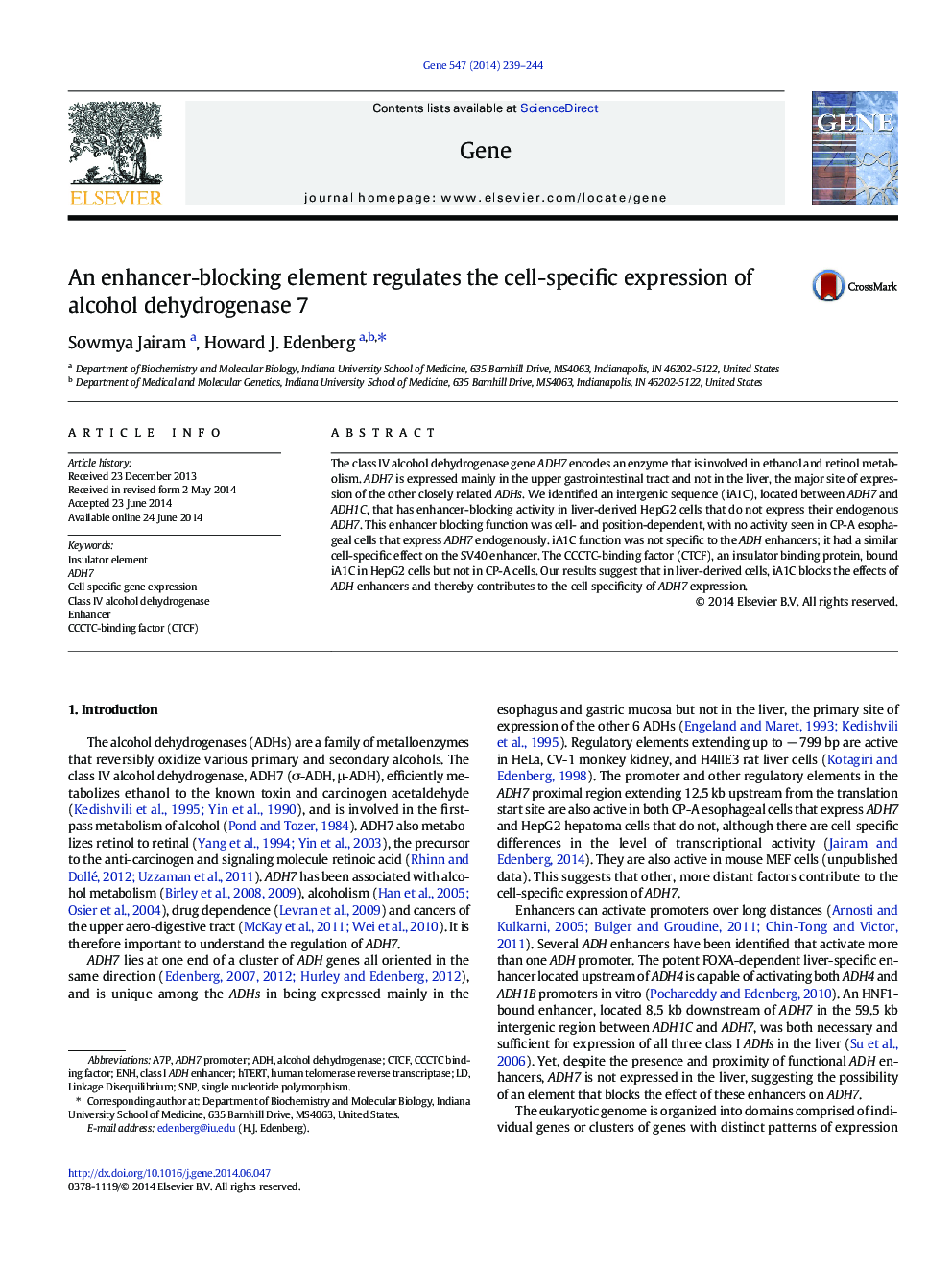| Article ID | Journal | Published Year | Pages | File Type |
|---|---|---|---|---|
| 2816231 | Gene | 2014 | 6 Pages |
•iA1C is a cell-specific insulator with enhancer blocking activity for ADH7.•iA1C functions with homologous and heterologous elements.•CTCF binds iA1C in cells where iA1C is active, and not in cells where it is not.•Genetic variation leads to a small but significant difference in function.
The class IV alcohol dehydrogenase gene ADH7 encodes an enzyme that is involved in ethanol and retinol metabolism. ADH7 is expressed mainly in the upper gastrointestinal tract and not in the liver, the major site of expression of the other closely related ADHs. We identified an intergenic sequence (iA1C), located between ADH7 and ADH1C, that has enhancer-blocking activity in liver-derived HepG2 cells that do not express their endogenous ADH7. This enhancer blocking function was cell- and position-dependent, with no activity seen in CP-A esophageal cells that express ADH7 endogenously. iA1C function was not specific to the ADH enhancers; it had a similar cell-specific effect on the SV40 enhancer. The CCCTC-binding factor (CTCF), an insulator binding protein, bound iA1C in HepG2 cells but not in CP-A cells. Our results suggest that in liver-derived cells, iA1C blocks the effects of ADH enhancers and thereby contributes to the cell specificity of ADH7 expression.
